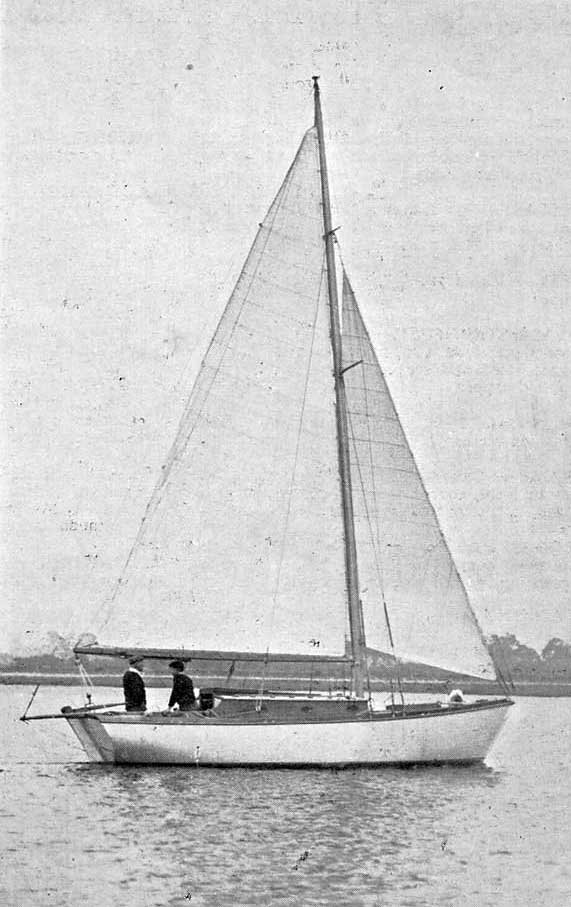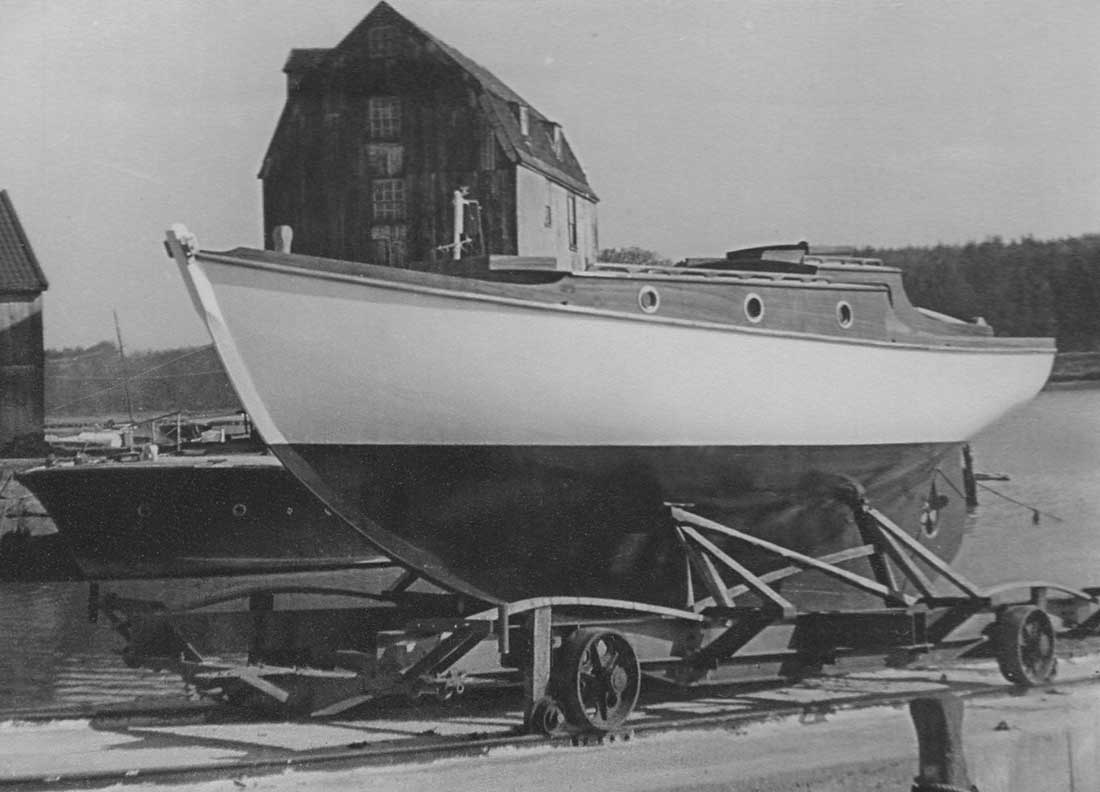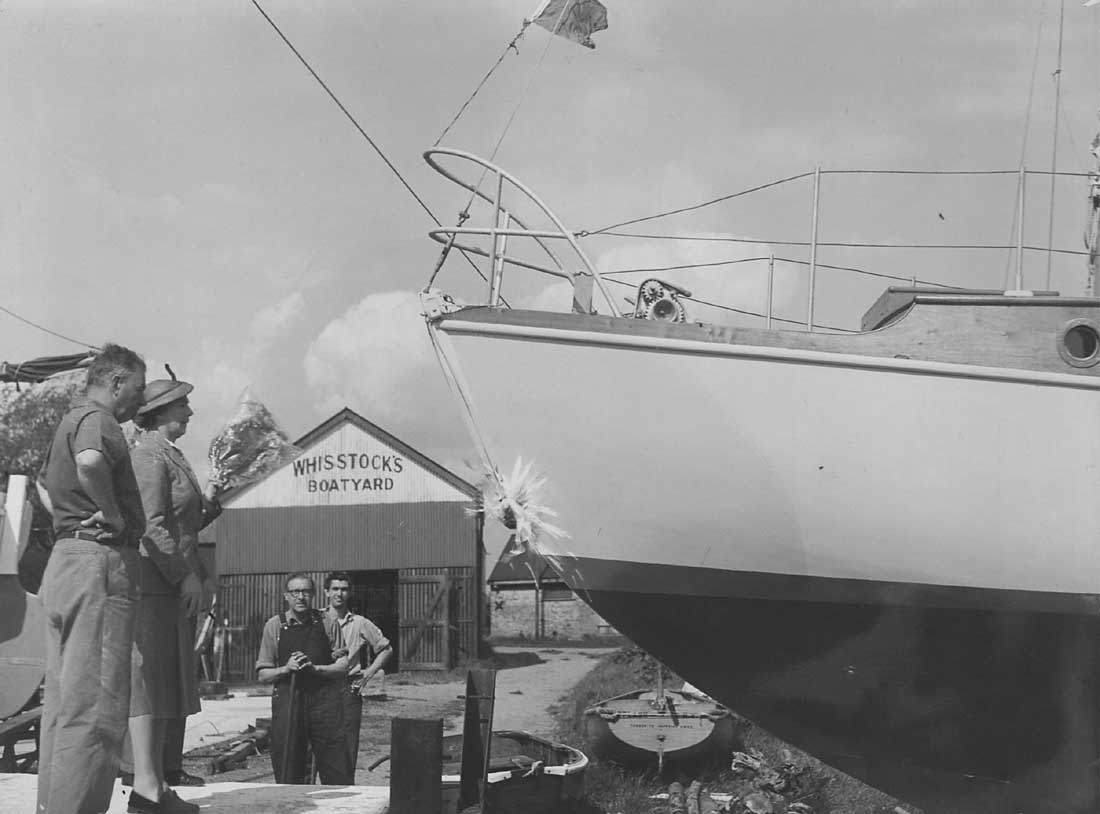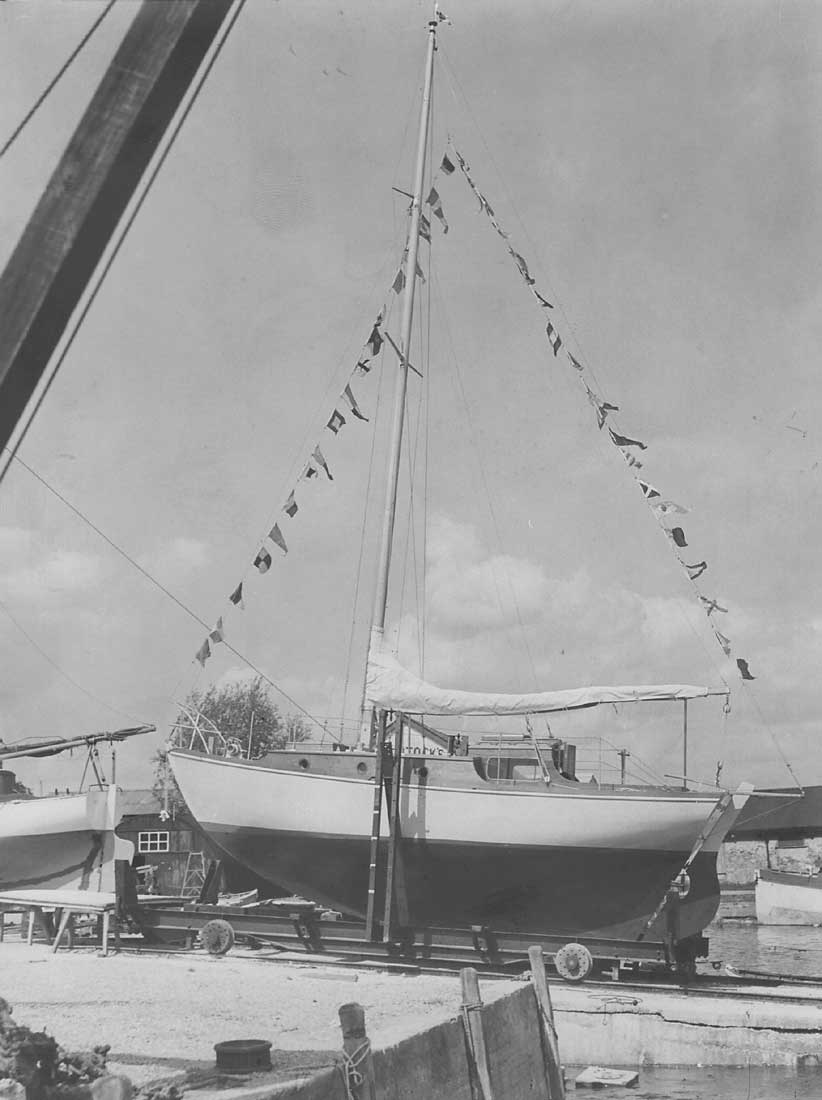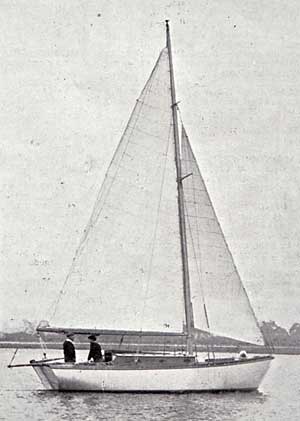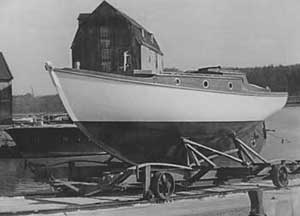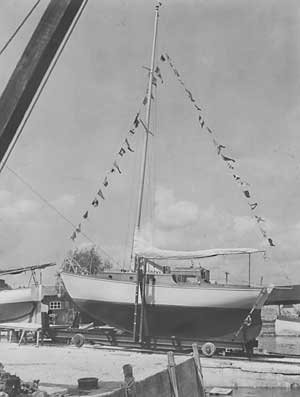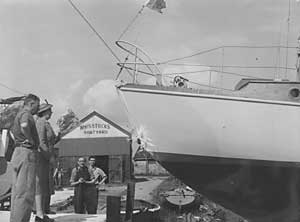| Original Specification | ||
|---|---|---|
| LOA | 7.772m | 25'6" |
| LWL | 6.5530m | 21'6"" |
| Beam | 2.438m | 8'0" |
| Draft | 1.219m | 4'0" |
| Displacement on dwl | 4017kg | 8855lbs |
| Ballast | 1524kg | 3360lbs |
| TM* | 6 tons | |
| Headroom | 1.676m | 5'6" |
| Mainsail | 22.300m² | 240ft² |
| Working jib | 10.963m² | 118ft² |
| Engine | 6.0kw | 8.0hp |
Design No. 169 – Deben 6-ton 7.772m (25'6") sloop
The Deben 6-tonner was designed by my father, Claude Whisstock in 1949to fill the need of the owner who requires the extra accommodation and cruising range(over the Deben 4-tonner). The first boat to the new design was Rachel, pictured left above, launched on 18th July 1950. This boat had the "standard" coachroof – that is with sidedecks, and no doghouse.
The second Deben 6-tonner was Deben Gull, launched on 15th March 1951, pictured right above. She had a full-width coachroof similar to many of the Deben 4-tonners, with the coamings dropping down to form the footrail both forward and aft; quite an attractive arrangement visually and providing extra width in the accommodation below. The cockpit remained as usual with sidedecks outboard of the coamings, and the cockpit coamings continued on to form the doghouse coamings, providing extra headroom down below, and a more sheltered main hatch and companionway.
The standard engine on the 6-tonners was a Stuart-Turner twin 8bhp two-stroke, sea-water cooled, petrol engine – these were (and still are) somewhat notorious, like many two-strokes, for being troublesome to start when hot, but even so were very popular small marine engines installed in many thousands of boats from the 1930's through the 1960's. And with proper maintenance, they did provide reliable quiet power for small sailboats and launches.
Nina, the third and final Deben 6-tonner was launched in June 1956. Like Deben Gull, she has a full width coachroof and a doghouse. Here she is pictured being launched; In the firstbottom photo, my father (looking a little pensive!) is on the "platform" with the owner and his wife, who has just christened the boat. Standing in the background, Wally Howe and Alan Barker are ready to give the cradle a start down the slipway if necessary.
The secondtop photo shows Nina was fully rigged and dressed overall for launch – launchings were getting more formal, though there was always a bottle-breaking ceremony right from the early days of the boatyard. It also gives us a good view of the coachroof and doghouse geometry.
We don't have the Lines Plan for the Deben 6-tonner, although we have recreated it from my father's hand-written corrected Table of Offsets. Nor do we have a Construction Plan. We can recreate the General Arrangement Profile and Sail Plans from the 1950 brochure for the Deben 4-Tonner and 6-Tonner (brochure scan loads in a new window) – the 6-tonner is on page 6 onwards.
We do however have the necks of the launching bottles from all three Deben 6-tonners! Launching bottle necks going back to 1931 were displayed in the boatyard office, a tradition that continued for 60 years.
Once we have recreated what we can of the Deben 6-tonner plans, they will be available as a free download, as are the Deben 4-tonner plans.
Perhaps this from a Deben 6-tonner owner sums up the design Very easy in the helm except in winds upward of force 5, when weather helm develops, probably a matter of having an intermediate jib, or of reefing earlier. Spins like a dinghy and never fails to stay. Returning from Holland, I made Harwich in the teeth of a rising gale, under sail alone, beating the last three miles against the tide. I never felt any lack of confidence in her power to meet such conditions. Her motion was very comfortable, I would say generally more comfortable than most. I only once got any quantity of water aboard, this when in a steep sea off the Galloper Light Vessel, when the top of a wave slopped over the quarter, was never pooped in running conditions and she leaves a clean wake. During a rally of cruising yachts of the Narrow Seas Club at Pin Mill she proved faster and closer winded than all vessels of a similar size.
Note: The Galloper Light Vessel was about 18 miles off the coast; there is now a major wind farm on the Galloper shoals. From Holland to Harwich is between 110 and 90 nautical miles, depending on where you set out from.
We have additionally made a start on a new Deben 6-tonner design which can be built using today's wood-epoxy construction methods – either cold-moulded or strip-planked, on laminated frames. The design is almost a replica of the original 6-tonner, with just a little more freeboard, slightly more beam and working headroom below. She will offer a gaff or bermudian rig. Ballast keel options will be a full-length cast iron keel, or a shorter lead keel with deadwoods making up the length, so that we retain the same long-keel underwater profile. If the new Deben 6-tonner could get as good a report as the original, then I'd be very happy.

